Two firms have been working on the first-ever aquatic plant survey for the entire Winnebago System. WI Lake and Pond Resource, LLC out of Eldorado and Cason and Associates, LLC out of Berlin spent many days this past July and August sampling vegetation in Lakes Winnebago, Poygan, Winneconne, and Butte des Morts.
The survey grid was devised by limiting the survey boundary to depths that allow for plant growth. Sediment and other particles, such as algae, in Lake Winnebago inhibit sunlight penetration, and at depths greater than 12 feet there is not enough sunlight to allow for plant growth. The survey was limited to depths less than ~6.6 feet in the upper pool lakes.
Once the survey boat reaches a sample point, the survey crew sinks a rake into the water until it hits the lake bottom. When the rake hits a gravel or rock bottom, the vibrations of the rake colliding with the hard substrate actually travel up through the rake handle and produce a sound. Sand and muck bottoms are determined more by feel. Once the substrate type is determined, the rake is pulled up. The vegetation that the rake collected is identified, and then a one to three density rating (rake fullness) is determined for both the rake as a whole and the individual species on the rake.
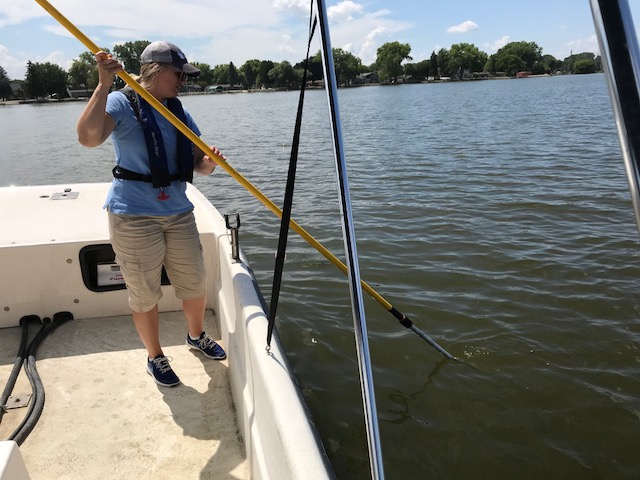

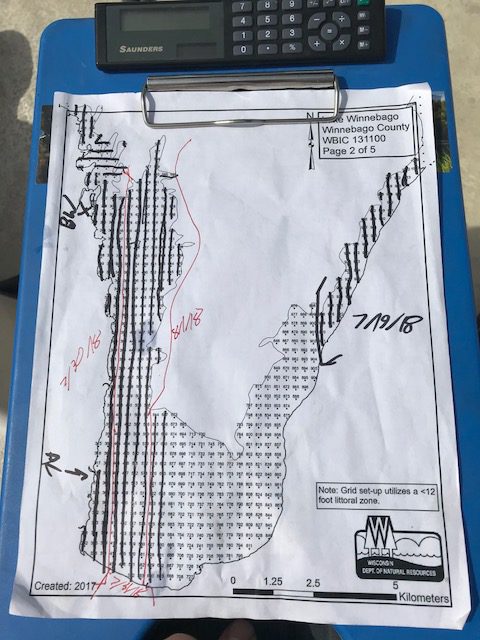
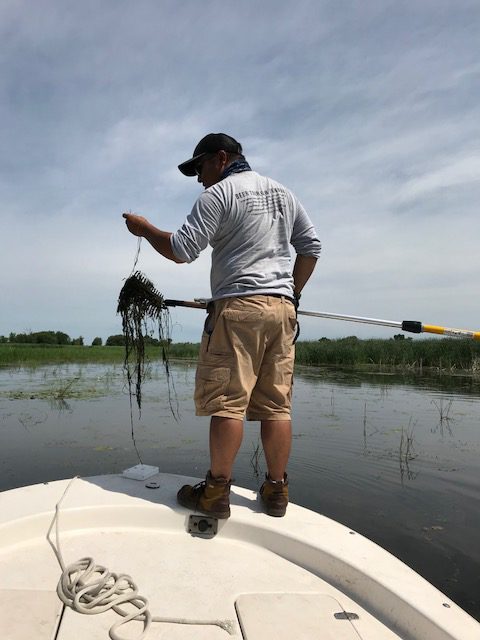
WI Lake & Pond Resource, LLC, the firm that is surveying Lake Winnebago, had not found plants at depths greater than 9.5 feet. They found that more of the lake than they thought consists of a rock bottom. Common plants included wild celery, common naiad, and sago pondweed. Overall there was less vegetation than they had expected, especially in the southwest corner of the lake where vegetation is usually abundant. Most rake pulls were a “one” the morning that I went out on Winnebago with Lake & Pond. This could have been due to the predominately rock bottom, which is less favorable to plant growth than muck or sand. Lake & Pond sampled 1078 points on Winnebago and 1037 on Butte des Morts. The sampling points were closer to each other on Butte des Morts, giving a higher “resolution” to the data. Sampling at the same resolution was not feasible on Winnebago due to its large size.
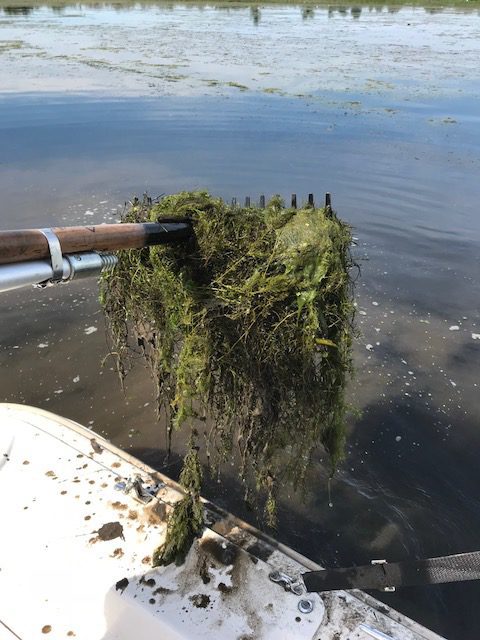
There was a quite a bit more action when I went out for the morning with Cason & Associates on Lake Poygan. Shallow water depths and the relatively sheltered bay facilitate abundant aquatic vegetation in Boom Bay. Sample after sample qualified as a “three” because the rake was loaded with plants. Plants recorded included wild celery, coontail, Northern water milfoil, hybrid/Eurasian water milfoil, white water lily, spatterdock, southern naiad, Elodea, wild rice, sago pondweed, long-leaf pondweed, and water star grass.
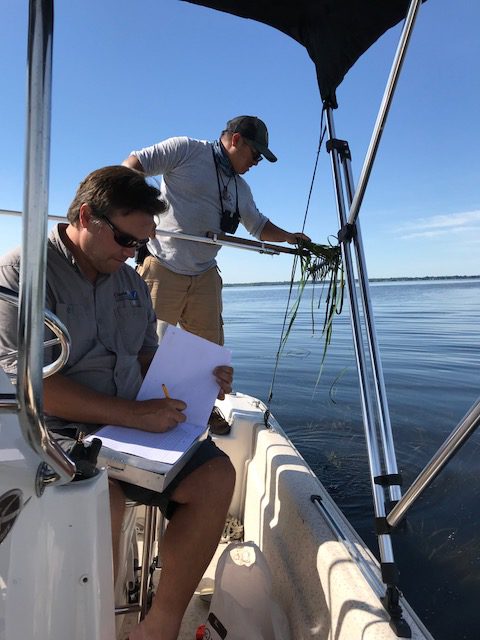 Not all days were so exciting for Cason & Associates though. One day they sampled over 200 sites and vegetation appeared at only three of them. Sampling points in Poygan were limited to depths less than 6.7 feet, and most vegetation was found at depths around two feet. Cason & Associates sampled 919 points on Poygan and 840 points on Lake Winneconne.
Not all days were so exciting for Cason & Associates though. One day they sampled over 200 sites and vegetation appeared at only three of them. Sampling points in Poygan were limited to depths less than 6.7 feet, and most vegetation was found at depths around two feet. Cason & Associates sampled 919 points on Poygan and 840 points on Lake Winneconne.
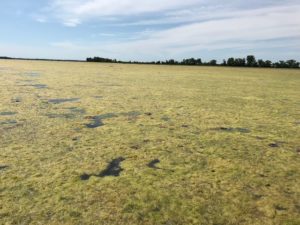
The two consultants worked really hard to capture such a large volume of data. Approximately 3,855 points were sampled on the Winnebago System! This data is extremely valuable as it will be some of the most important information used when making aquatic plant management (APM) decisions.
The completed PI survey will produce a very accurate snapshot of the status of aquatic plants in the system. Managers will know the locations, density, frequency, substrate preference, and depth preference of every detected aquatic plant species in the system. The PI survey will tell biologists where certain species do well, at what depth, and on what lake substrates. This in turn will help guide the decision making process when it comes to reestablishing aquatic vegetation in the system. If it’s known that a species does well in a certain spot, on a specific substrate, at a certain depth, there might be success trying to establish it in spots that are similar.
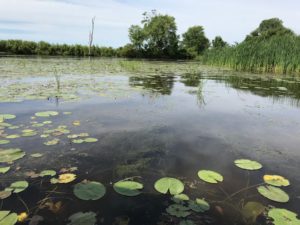 Additionally, the completed survey gives lake managers a baseline level to compare APM efforts to. Management work can be evaluated quantitatively by repeating portions of or the entire survey in future years. Are plant levels increasing or decreasing? How is the species composition shifting? Are APM goals being met? These are questions that can only be answered with preexisting data.
Additionally, the completed survey gives lake managers a baseline level to compare APM efforts to. Management work can be evaluated quantitatively by repeating portions of or the entire survey in future years. Are plant levels increasing or decreasing? How is the species composition shifting? Are APM goals being met? These are questions that can only be answered with preexisting data.
Managing aquatic plants is important for both wildlife habitat and for water quality. The food web relies on primary producers (plants) for the initial input of energy into the food web. Along with food, plants provide nesting habitat, shelter, and shade for aquatic organisms.
One of the most important functions of aquatic plants is to anchor sediments. Plant roots bind to the bottom substrate and prevent phosphorus laden sediments from being resuspended back into the water column. You can read about how sediment resuspension degrades water quality HERE. Lastly, plants uptake nutrients like phosphorus for their growth. So, when water bodies lack aquatic plant growth the available phosphorus never gets utilized.
The final survey report will be completed by the consultants by the end of the year. The PI survey has been a significant step forward in the development of the Lake Management Plan that is being developed for the Winnebago System (read more here). More effective decisions can be made and management work can be evaluated with the results of the PI survey. A public presentation summarizing the report will be given in early 2019, so keep your eye out for an announcement about that. We look forward to reading the final report!
Winnebago Waterways is a Fox-Wolf Watershed Alliance program. The Fox-Wolf Watershed Alliance is an independent nonprofit organization that identifies and advocates effective policies and actions that protect, restore, and sustain water resources in the Fox-Wolf River Basin.
Follow the Fox Wolf Watershed Alliance’s Winnebago Waterways Program on our Winnebago Waterways Facebook page or @WinnWaterways on Twitter! You can also sign-up for email updates at WinnebagoWaterways.org.
This article was written by Austin Pethan for the Winnebago Waterways Program. Questions or comments? Contact Austin at austin@fwwa.org or (920) 920-851-4295.





